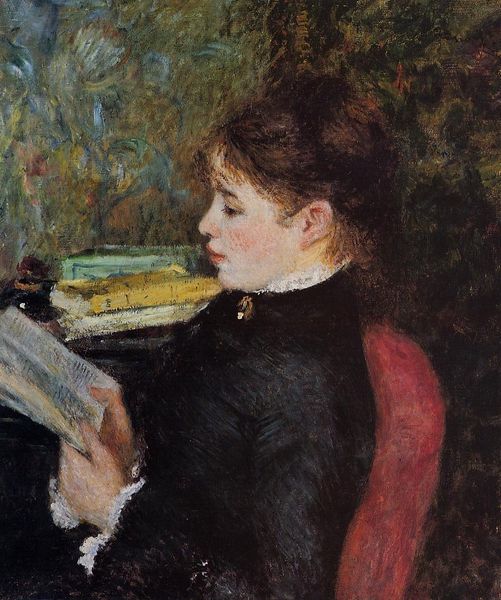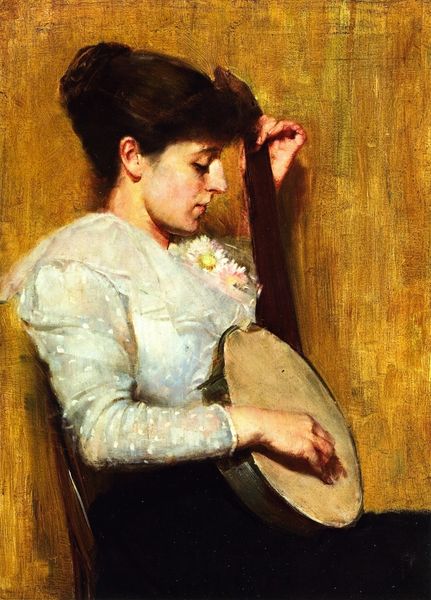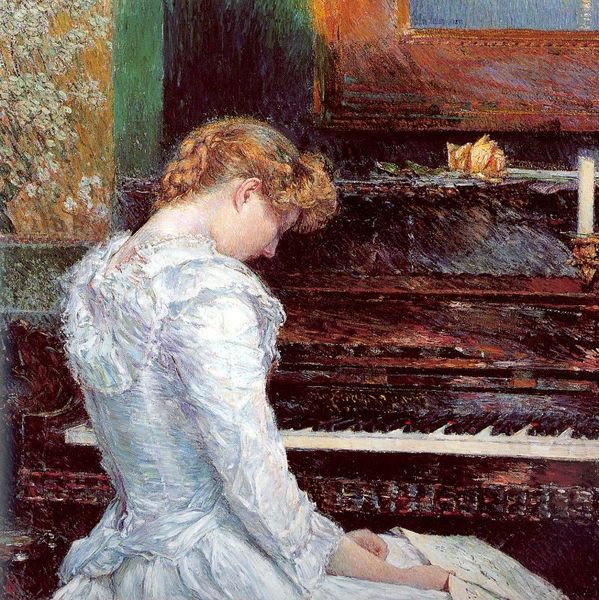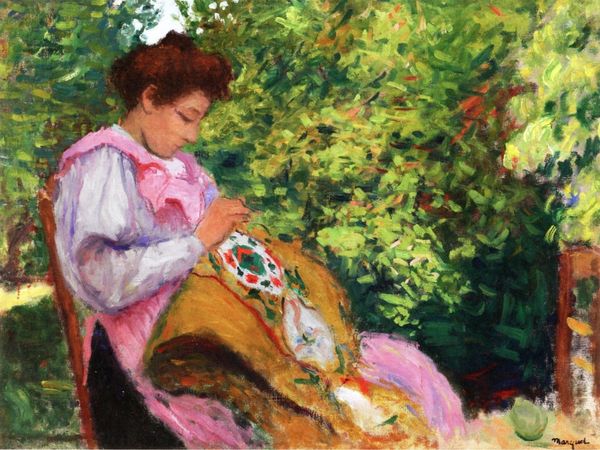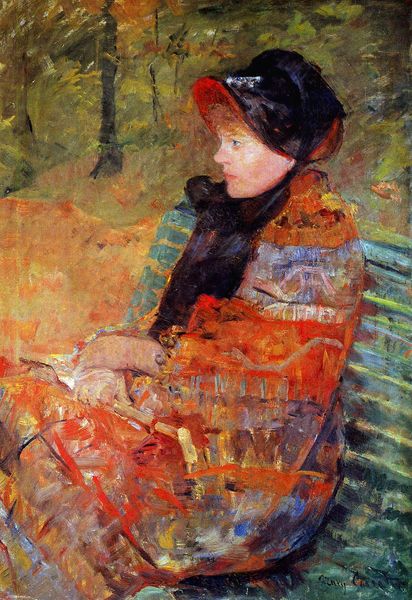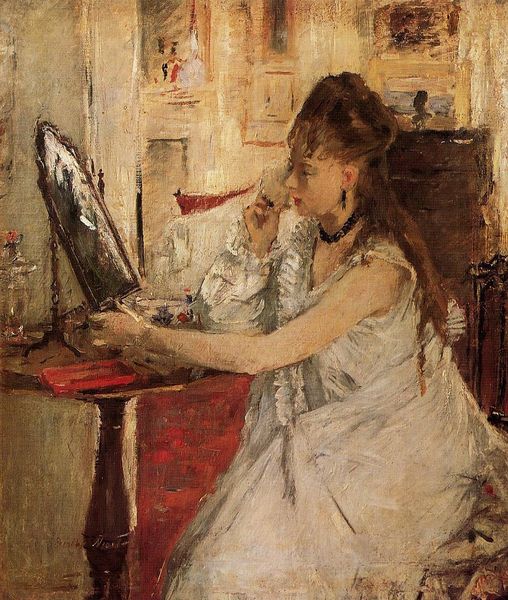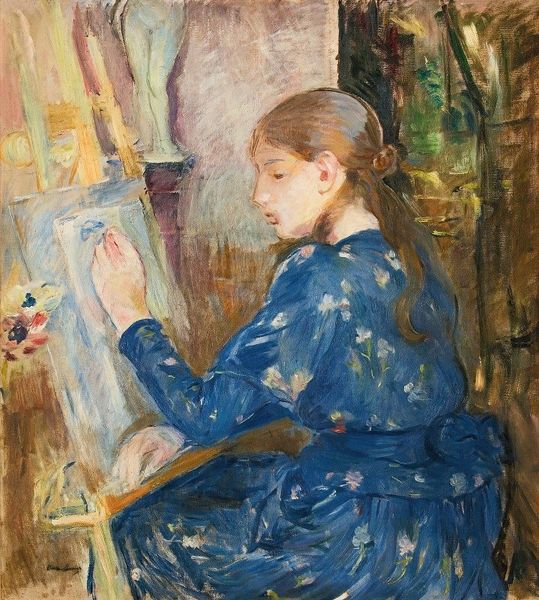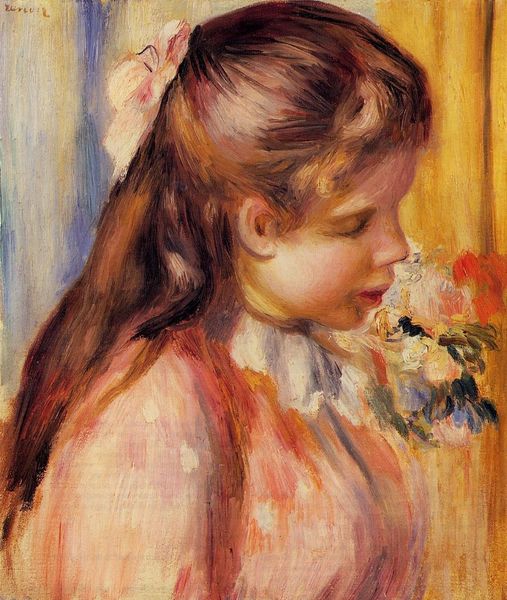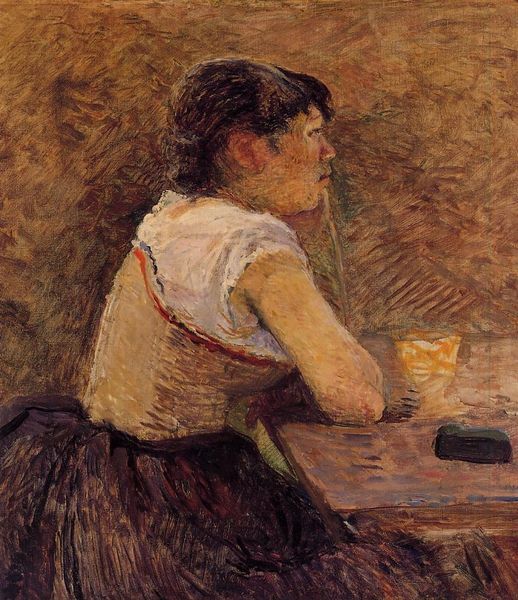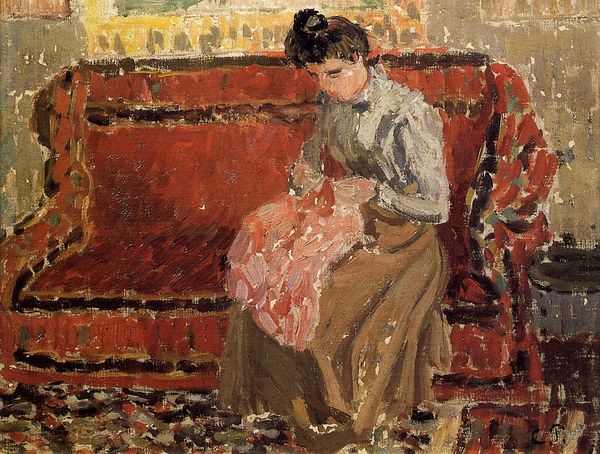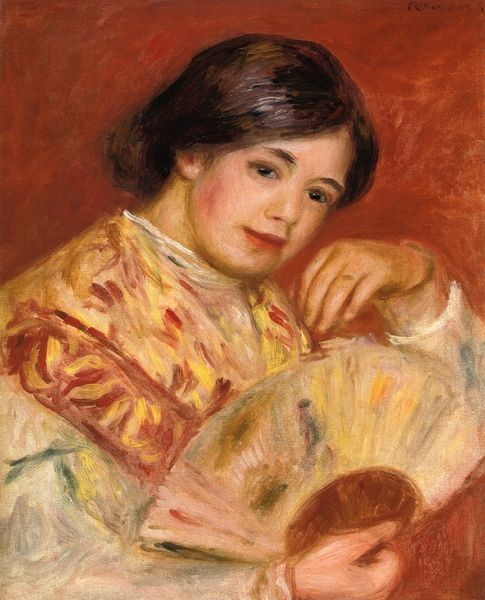
painting, oil-paint
#
portrait
#
painting
#
impressionism
#
oil-paint
#
oil painting
Dimensions: 92.71 x 64.77 cm
Copyright: Public domain
Editor: This is Mary Cassatt's "Lydia at the Tapestry Loom," an oil painting from 1881. It feels so intimate, like we're catching a glimpse of a private moment. The colors are soft and almost dreamy, yet there's a stillness in the composition. What do you see when you look at this piece? Curator: Formally, I'm struck by the contrasting textures. Cassatt juxtaposes the rough weave of the tapestry with the smooth, almost porcelain, skin of Lydia. And look at the repetition of forms - the circular shape of the loom echoes in the curves of the chair and even subtly in Lydia's bent head. Editor: I see what you mean about the circles! But what does that repetition achieve, beyond just being visually pleasing? Curator: It creates a sense of visual harmony, a kind of looping rhythm. Think of structuralism. Each element relates to and reinforces the other, building toward a complete pictorial structure. Note also how the loom dissects the image and isolates Lydia from our gaze. Editor: She seems so engrossed in her work, oblivious to us watching. It’s interesting how the loom does create that separation. What else stands out from a formalist perspective? Curator: Consider Cassatt's use of light. It falls unevenly, almost arbitrarily, illuminating certain areas while leaving others in shadow. There isn’t an overwhelming contrast to make things photorealistic; rather, it’s there for visual tension. Editor: So, rather than trying to capture reality perfectly, she’s manipulating these elements—light, texture, form—to create a certain effect? Curator: Precisely. We read her subjectivity through those choices and create meaning within those interactions. Editor: This deeper look really reframed my initial thoughts about the art, bringing new considerations regarding shape, material, and how these visual choices affect the narrative. Curator: It is essential to examine all the artwork’s elements and allow those aspects to form connections between one another to see it as one complete work, open for any individual's subjective analysis.
Comments
No comments
Be the first to comment and join the conversation on the ultimate creative platform.
